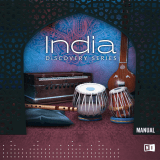Page is loading ...


Thank you for buying the Hammered Dulcimer
How to install?
In order to properly install your HALion library please follow the instructions given on
the Steinberg website or watch the „How to install“ HALion instruments video.
For any kind of questions concerning the installation or registration of HALion
instruments please contact Steinberg – in terms of the instrument please contact
us at : support@cinematique-instruments.com

The instrument
The hammered dulcimer is a stringed instrument with 31 string pairs
stretched over a trapezoidal shaped sound box. Usually, the hammered
dulcimer is set on a stand in front of the musician, who holds small
wooden mallet hammers to strike the strings.
The dulcimer has two bridges, a bass bridge near the right and a treble
bridge on the left side. The bass bridge holds up bass strings, which are
played to the left of the bridge. The treble strings can be played on
either side of the treble bridge, playing them on the left side gives a note
a fifth higher than playing them on the right of the bridge.
The strings of a hammered dulcimer are found in pairs, two strings for
each note. Each set of strings is tuned in unison and is called a course.
As with a piano, the purpose of using multiple strings per course is to
make the instrument louder, although as the courses are rarely in perfect
unison, a chorus effect usually results like a mandolin.

What we did
We recorded the hammered dulcimer with two microphone positions. At
the top of the instrument we placed - in a ms stereo set-up - a pair of
Neumann U87s and at the bottom we put a single condenser. These two
positions are covering a wide range of sound, so that you are free to mix
them at your own requirements..
We played the hammered dulcimer in minor thirds and concentrated
mainly on three different articulations. Firstly we recorded the „normal“
notes which means that we hit the strings with the typical tiny wooden
sticks, we called this articulation „Sticks“. Furthermore we struck the
strings with mallets which we called „Mallets“ and finally we recorded an
articulation where we struck the strings with a timpani mallet and
damped the strings with the palm of the hand which we named „Muted“.
All these articulation were recorded in 4 round robin variation and up to 4
velocity layer.
Beside this we cared most about producing the typical hammered
dulcimer tremolo. Thus we equipped the instrument with two different
ways to produce this roll alike tremolo. The first option to generate the
tremolo will be achieved by duplicating each already played note when
releasing the key. This lets you exactly control the velocity

and tempo of the tremolo. The other and more easy way to produce the
tremolo uses the modwheel. By turning the wheel you control the tremolo
tempo from slow to fast. In order to avoid sounding too artificially we
included a random factor which automatically affects the tempo and the
velocity which results a very organic tremolo which lets you easy switch
between single notes and tremolo rolls.
Furthermore we added several functions and effects
such as the control of reverb, delay, decay, distortion
or octave which expands the entire sound of the
hammered dulcimer and gives you a lot of options.
All in all we came out with an instrument which
enriches your music with a nice and organic feel
whether you used it as a solo or just as a background
instrument.
Overall data amount is approx. 2.5 GB (1.700
Samples)

The content
Articulation There are 3 different articulations available: sticks,
mallets and muted:
Sticks: sustained notes, playing the strings with a drum
stick release
Mallets: sustained notes, playing the strings with its
typical small wooden mallets
Muted: muted notes, playing the strings with a timpani
mallet and damping the strings with the palm of the
hand

Mic Blend This knob mixes the two different microphones and its
position - top: Neumann U87 im m/s stereo and
bottom: AKG C414. At the very left side you hear just
the AKG mic and at the right side you hear kust the
Neuman microphone. The middle position plays both
microphones equally balanced
Length controls the amount of decay/ release from short to
long
Tone controls the entire sound from low and mellow to high
and brillance
Delay controls the amount of delay
Delay Time By clicking on the name you can select from three
different delay time: 4
th
, 8
th
and 16
th
Reverb The knob controls the amount of reverb
Reverb Type By clicking on the name you can select from 4 different
reverb types such as Room, Hall, Special and Infinite

Tremolo By activating this button you achieve a tremolo
function. When releasing an already played key the
instrument plays the note again. This lets you easily
create tremolos – you can exactly control the velocity
and tempo of the tremolo.
Octaver When activated, an octave lower note will be played to
the orginal note
Cabinet activates a speaker/ cabinet simulation


We wish you a great deal of fun and inspiration using our instruments.
Thanks to René, Jumpel, Christian and Niklas at Cinematique Instruments
and Florian, Matthias, Michael and Frank at Steinberg.
Copyright © April, 20152018 by Cinematique Instruments, Cologne, Germany
/



